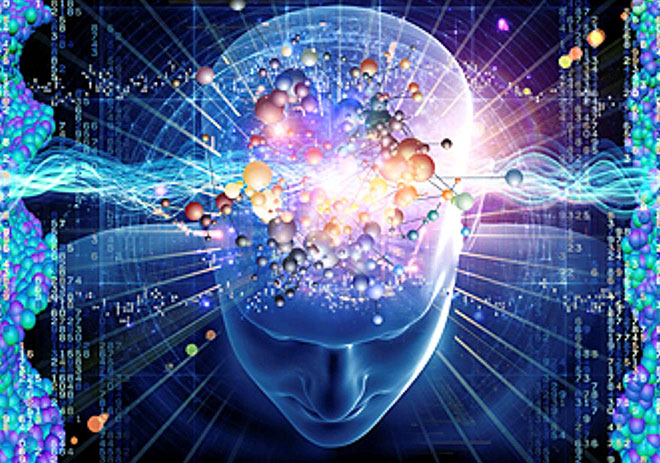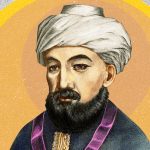Click here to download PDF
Sponsored in Honor of the upcoming Marriage of Miriam Wilamowsky to Binyomin Zonenshayn בשעטו״מ
שהזיווג יעלה יפה בבנין עדי עד
Seeing Sound Hearing Sights
“And the whole nation saw the sounds”(20:14) Rashi brings the Chazal that this is to be read literally they saw sound and they heard sight! There was an amazing sensory crossover at the time that Hashem said the ‘Aseres HaDibros’ and what is normally perceived by seeing was heard and what is normally perceived by hearing was seen. What is the purpose of this sensory crossover? What is the message to us?
Torah Shebichtav & Torah Shebaal Peh
As is well-known, the mazal of the month of Sivan is “Teomim”- twins (Gemini) because in this month we got the Torah that is “twins”. There is the written Torah and the oral Torah. Why did Hashem split the Torah into two? Why couldn’t it be all written or all oral? This question is related to the question above because the written Torah is learned by reading which is seeing and the oral Torah is learned by listening which is hearing. To answer our questions, we need to understand the meaning seeing and the meaning of hearing. What is the difference between the information that we get from seeing as opposed to the information that we get from hearing?
Seeing
“Seeing is believing”. When we want testimony, which is the highest form of proof, we want to know what the witnesses saw, not rumors they heard. Even when testifying to a person’s statement they have to see his face and watch as those words come out of his mouth… hearsay is not testimony. Seeing is the most objective sense that we have for measuring fact. Once something is observed visually whether by the naked eye, or with the aid of a microscope or a telescope, it is an incontrovertible fact that needs to be dealt with.
Seeing vs Hearing
However, as objective as seeing is, it only sees the surface. Seeing doesn’t perceive explanations as to why things happen, whether the motives behind an action that was done by choice, or the law of nature behind a natural occurrence. “Why” is invisible and is what the mind attempts to figure out. Often we are wrong as to “why”, and that’s what we mean by “appearances can be deceiving”. There are some things that cannot be perceived by sight at all because they are pure ideas like the “right” versus the “wrong”, morality, and ethics. These are all ideas that we were either taught or figured out. How are they taught? The ideas are put into words and communicated verbally and received with the sense of hearing. This is the difference between demonstration and explanation! Demonstration displays the raw facts. The explanation will always be verbally commentary accompanying the display. In other words: Sight perceives “what” – Hearing perceives “why”. However, the weakness of an idea that can never be visually demonstrated is that it may just be a theory, but not reality. Anything that can’t be visually verified can be denied (rightfully or wrongly). Some form of visual demonstration is necessary to establish incontrovertible fact.
The Blind
With this we can understand the tremendous wisdom of the halacha that the “Suma”-blind man is considered to be a fully mentally competent individual and is responsible for all his actions. We rule like the opinion that generally speaking he is obligated and all the Mitzvos except for the particular ones that blind men are distinctly exempt from. However, Chazal have said the blind man is considered like dead in his own lifetime() why? The answer to this is rooted in another fundamental question: The first thing Hashem created was light! Why? There was nothing to see yet and no one to see anything! My Rebbe HaGaon Maran HaRav Moshe Shapira ZT”L explained that light sets the tone of the entirety of existence! What is “existence”? “Existence” is what Hashem wants to show us! Life is to be experienced and witnessed, not something you hear about. Hence, the first thing created was “light” the ability to show and demonstrate. The blind man is mentally competent because since he is able to hear we can teach him wrong from right. Sadly, for him all of life is just “a thing he hears about” he doesn’t actually observe it. The essence of experiencing existence is to see it! Not being able to do that makes it as if he is dead in his own lifetime.
The Deaf
A person who was deaf his whole life and never heard may be able to observe life but the explanations for “why and how” life works and, more importantly, pure ideas that cannot be seen like the right versus the wrong are sealed off to him! This is why Chazal I’ll gave the “Cheresh”– person who was deaf from birth – the halachik status of someone mentally incompetent just like a minor or an imbecile. A person cannot be held responsible for his actions if he cannot be taught right from wrong. [important note!!! We are speaking in the days of Chazal, before there were tremendous breakthroughs in the education of the deaf that we have B”H merited in the last few generations. As far as the halachik status of a person who was/is deaf his whole life in this day and age ask your local Orthodox rabbi]
Torah Shebichtav
With this we could understand the tremendous Divine wisdom in the fact that we have a “Twin Torah”, the written Torah which is seen, and the oral Torah that is spoken and absorbed with hearing. Their different ways of absorption are perfectly parallel to their difference in function. As we mentioned many times before, what gets into the written Torah are prophecies. The prophet sees and just like he saw it so also it has to be put in writing for others to see. With this we could understand why the written Torah will not address certain issues that are only addressed in the oral Torah. As the Maharal explains in his first introduction to his Gevuros Hashem: The Written Torah will only address what is seen, and this is the secret why the Written Torah doesn’t talk about Olam Haba as being the final and absolute reward of mitzvos. As the Gemara says (Brachos 34b) all the prophets only saw as far as Moshiach but Olam Haba no eye has seen it except for you Hashem”. Olam Haba is “out of line of sight”. It’s something that we were taught about, not something that can be seen, not even in prophetic vision. On the opposite extreme the written Torah gives the impression as if the reward for Mitzvos is bounty in this world with rainfall, abundant crops, and peace. This is because the Written Torah talks about what you will see, and you will indeed see that when you keep your Mitzvos you get all these things, even though they are not the real reward for the Mitzvos, only fringe benefits.
Torah Shebaal Peh
The oral Torah provides the in-depth explanation for the mitzvos, and also discusses those ideas that can never be visually apprehended, like that Olam Haba being the real reward for mitzvos. Furthermore, in polar opposite to the Written Torah that stresses reward for Mitzvos that you’ll see that you’ll get up front, the Oral Torah will discuss a very elevated philosophical idea that’s hard for anyone to accept until they reach the very high level of refinement of mind and character: to serve Hashem “L’shma”- because it’s the truth – without wanting any reward whatsoever. This is the reason that when Tzadok and Baisus heard this idea which they couldn’t accept from Antignus Ish Socho rebelled against the Oral Torah where this idea is to be found, but they were able to hold on to the written Torah (even though there’s evidence that they did not believe in it either see Menachos(65a)) where this idea isn’t spelled out because it’s an elevated concept, and not a visible entity.
Perfect Unity
The necessity for this “twinness” in Torah is because of our human limitations. These experiences are compartmentalized, our eyes only see, and our ears only hear. For the seeing – factual aspect of Torah we have the written Torah and for the explanations and deep ideas and the we have the oral Torah – but we must remember it’s all ONE TORAH and it ‘divides’ into written and oral only because our learning senses of seeing and hearing are divided into eyes and ears. At this great event of receiving the Torah directly from Hashem we were raised above the limits of our senses. The particular significance of this sensory crossover was to show it’s all one Torah. The written Torah which is “seen” was “heard” meaning: it is not lacking the deep ideas that in human experience can only be conveyed by speaking and hearing. The Oral Torah that is “heard” was “seen” Meaning: these ideas aren’t theory! They are real and solid fact! At this great event we were granted the great experience of perceiving the perfect unity of the Torah.








